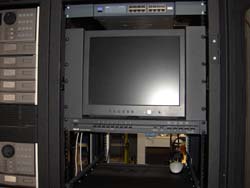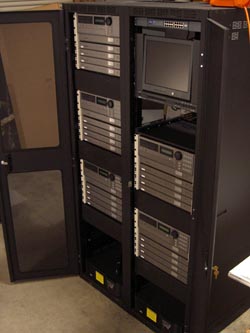Systematic Scrutiny

- SAN DIEGO, CA-Getting video surveillance contracts from state and county governments can be a complex business. In San Diego County, Security Systems Techniques has been providing access control, alarm, and surveillance to the government for 18 years and has the contract process down to a science.
"We operate under a job order contract," said Al Bitarafan of Security Systems Techniques, "which is similar to a federal GSA contract. We successfully operate under the job order contract which means that jobs under $500,000 work like having an open purchase order and if it relates to security it goes to the job order contractor who had previously bid on the contract. That's us."
The county keeps a book on these bids and companies build a proposal that allows the government to check and see if the numbers correctly line up with the bid. This simplifies the process when there is constant bidding going on. This is typically how Security Systems Techniques has done business with San Diego County, installing door locking control panels and alarm systems for all the jails in the county. But sometimes, as in a recent overhaul of its juvenile hall surveillance system, the government just orders a shootout.
"They had a bad experience with other systems before," noted Bitarafan, "so they asked to see a demo of different systems. We arranged for Mitsubishi to come in and help us demonstrate their Linux-based networked video server and the DX-TL5000 DVRs. The county liked the ease of use and the levels of access control we could integrate with it, as well as its robust operation, so they approved a five-location computer network and five DVRs along with LCD screens for low profile monitoring."

In San Diego County, Mitsubishi DVRs allow operators more reliable and robust access to a networked surveillance system.
Still, with the new technology, they needed to integrate the dual goals of broader access and tight control at the same time. The network technology allows all the DVRs and the network hub to be located in the communications room with access and control happening remotely. That meant locating computers in the control room, and four other offices of supervisory personnel. Within the communications room there are dedicated monitors connected to each DVR that show the activity of that unit. They are also connected to a local computer that can log onto any DVR and load or download information from it.
The advantages have been numerous. On the previous system, if the VCRs failed, the operators would not know it until they tried to access the images. However, if a DVR fails, an alert system notifies operators. In addition, there is an emergency UPS in place if power fails due to weather, power system glitch or even if it's caused by problems within the population. This points to a decided advantage of the network since when there is a problem within the confines of the facility, responders need to be able to operate within the framework of their facility. For supervisory personnel to be able to view video surveillance immediately through remote locations using the appropriate pass codes, it saves valuable time in handling unexpected events.
This kind of flexibility is made possible by the Mitsubishi DX-PC55U software. The software allows a user to remotely access recorded live video, as well as program the system remotely.
The system also provides for other advanced control features as well such as PTZ control of dome cameras and various frame rate and resolution settings. These functions are all accessible from one screen with the new software. Live or pre-recorded images can be easily captured and saved to the monitoring PC's hard drive, permitting easy search and playback of recorded images. Images can be monitored in full screen and on the same screen, from the same monitoring station, the operator can access split, sequence, and channel selection of video images from a Mitsubishi DVR.
Additionally, this network video surveillance system has been designed to accommodate growth, so should the county want to expand surveillance to other facilities, additional systems can be easily connected.
A daily selection of the top stories for AV integrators, resellers and consultants. Sign up below.
The AVNetwork staff are storytellers focused on the professional audiovisual and technology industry. Their mission is to keep readers up-to-date on the latest AV/IT industry and product news, emerging trends, and inspiring installations.
